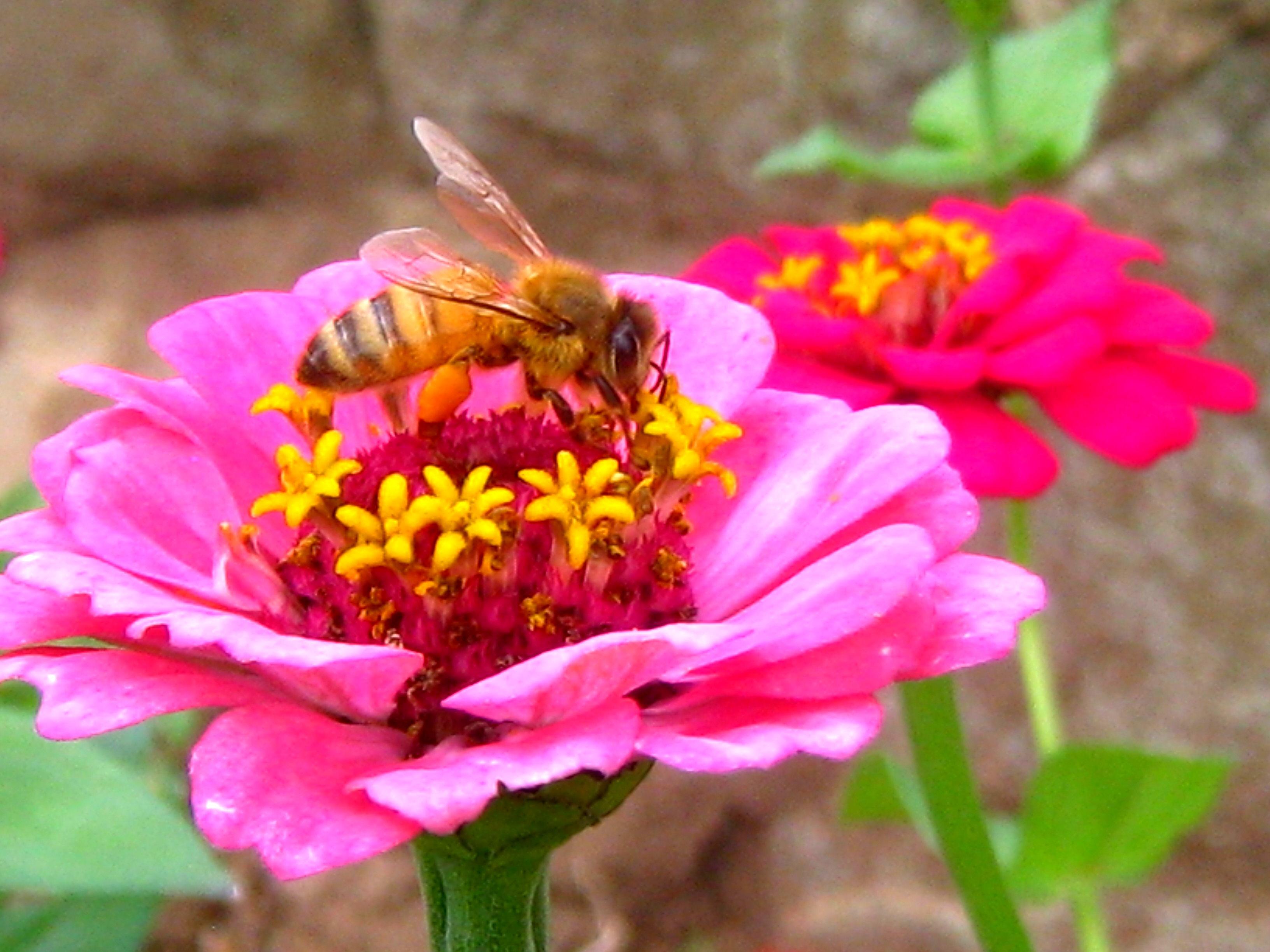There are over 150 foods that we grow that depend on pollinators to produce their crops. These pollinators, like bees, ants, hummingbirds, butterflies, and bats, are just as important to the plants as sun and water! If you’ve eaten an apple, cucumber, strawberry or a tomato lately, you’ve eaten the product of animal pollination.
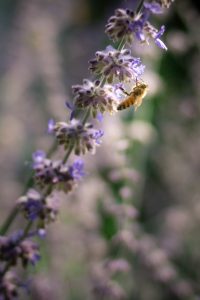
Unfortunately, pollinator populations are in decline from causes like disease, pesticides, and habitat loss. The good news is that we can help! Adding flowers and habitat to your garden that will attract pollinators can give them a boost while making sure your plants get the pollination they need.
When planting flowers to attract pollinators, make sure to plant them in clumps rather than single plants. It’s also helpful to choose varieties that bloom at different times of the year, to make sure there’s a steady supply of nectar. Select a variety of flower color and shapes, to attract different kinds of pollinators. Of course, choosing as many native species as possible will be the most beneficial, as they may also serve as host plants for the larvae of many pollinators.
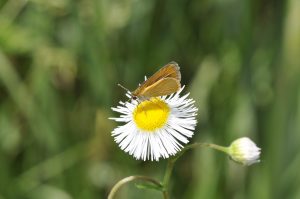
Butterfly on an Aster
To provide habitat for nesting and egg-laying, make sure to plant some shrubs, tall grasses and low growing plants. Leave a few piles of fallen branches and sticks undisturbed, as well as some patches of bare ground. For water, you can use a shallow tray with stones set in it for a place to perch. You can also leave a hose or faucet on a slow drip to create a damp spot since many butterflies and bees prefer to sip from a mud puddle.
Here’s a list of suggested herbs and flowering plants to grow, to make sure your pollinators stay happy and healthy (click on each kind for more information!):
- Lavender (Lavandula)Â
- Catmint (Nepeta cataria)
- Sage (Salvia officinalis)
- Cilantro/Coriander (Coriandrum sativum)
- Thyme (Thymus vulgaris)
- Fennel (Foeniculum vulgare)
- Borage (Borago officials)
- Buttercup (Ranunculus)
- Aster Â
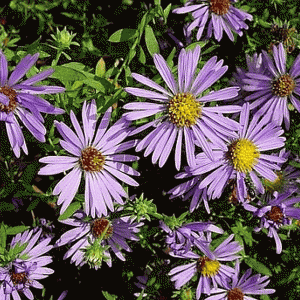
Asters
- Hollyhocks (Alcea rosea)
- Anemone (Anemone canadensis)
- Calendula (Calendula officinalis)
- Sweet Alyssum (Lobularia maritima)
- Poppy (Eschscholzia californica)Â Â
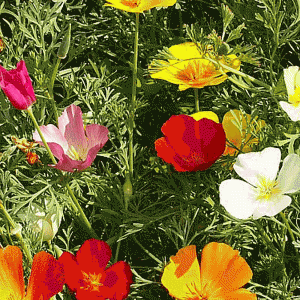
California Poppies
- Sunflower (Helianthus annuus)
- Zinnia (Zinnia elegans)
- Cleome (Cleome serrulata)
Copyright 2018 Everwilde Farms

